Hybrid Effect of Steel Bars and PAN Textile Reinforcement on Ductility of One-Way Slab Subjected to Bending
Abstract
:1. Introduction
2. Experimental Program
2.1. Concrete Matrix
2.2. Reinforcement Techniques
2.2.1. Conventional Steel Reinforcements
2.2.2. Textile Reinforcement Fabrics
2.3. One-Way Slab Preparation
2.3.1. Mixing Procedures
- The required amounts of both dry cement and silica fume were mixed for 5 min to ensure silica fume dispersion between the cement particles.
- The process of fine sand addition to the mixer continued for another 5 min.
- A third of the total quantity of water was added, and the mixing continued for next 1–2 min.
- The mixture of 2/3 residual water and superplasticizer was added to the rotary mixer, with the operation continued for further 4 min to assure that all components were mixed. Then, the mixing was continued manually when the rotary mixer was stopped, especially for the parts not reached by the mixer blades. After that, the rotary was operated to achieve sensible fluidity.
2.3.2. Concrete Properties
2.3.3. Casting and Curing Method Adopted
2.4. Instrumentation and Measurements
2.4.1. Four-Point Bending Test
2.4.2. Deflection Measurement Devices
2.4.3. Strain Measurement Device
3. Results and Discussion
3.1. Load Capacity
3.2. Load–Deflection Behavior
3.3. Load–Strain Curve
3.4. Moment–Curvature
3.5. Deflection Profile
3.6. Ductility Calculation
3.6.1. Conventional Method
3.6.2. Namaan and Jeong Energy Method
3.7. Deformability Index
3.7.1. Deformability of FRP-Strengthened Elements
3.7.2. Deformability Factor
4. Conclusions
- The yielding point of steel reinforcement should not be considered as a criterion to indicate the ductility of the composite reinforced concrete flexural members since the second reinforcement type may delay the yielding of the steel reinforcement.
- The ductility calculation based on displacement and curvature ratios exhibits clear conflicts since the former depends on the deflection at the yield and ultimate loads, while the curvature ratio is affected by the compressive strain of the concrete and the tensile strain of the steel reinforcement at yield and at ultimate load.
- The method of calculating the ductility of the composite reinforced concrete flexural members using the ratio of the ultimate deflection to the deflection of the service load yields an arbitrary value.
- The deformability method, which was developed by the Canadian Standards Association (2012) (CAN/CSA S-806 12), showed a rational ductility value for the two (SRC + 1T and SRC + 2T) tested slabs.
- In the SRC slab, the ductility value was found to be equivalent for both displacement ratio and energy methods, while in the case of the slabs SRC + 1T and SRC + 2T, the ductility values calculated using the displacement method was found to be equal to 60% of that calculated using the energy method. However, the last method proposed the value of 4 as a limitation that separates the brittle and ductile failures for the flexural reinforced rectangular members.
- The energy-based method was found to be the most suitable method of calculating the ductility for the composite reinforced concrete flexural members since (1) it considers a mutual, cooperative contribution of the textile and steel reinforcements in sustaining the applied stresses, and (2) it considers the variation in the slope of the load–deflection curve.
Author Contributions
Funding
Institutional Review Board Statement
Informed Consent Statement
Data Availability Statement
Acknowledgments
Conflicts of Interest
Sample Availability
References
- Tann, D.B.; Delpak, R.; Davies, P. Ductility and deformability of fiber-reinforced polymer strengthened reinforced concrete beams. Struct. Build. 2004, 157, 19–30. [Google Scholar] [CrossRef]
- Hussien, O.H.; Ibrahim, A.M.; Abd, S.M. Improving Flexural Behavior of Textile Reinforced Concrete One Way Slab by Removing Weft Yarns with Different Percentages. Civ. Eng. J. 2018, 4, 2903. [Google Scholar] [CrossRef]
- Saadatmanesh, H.; Malek, A.M. Design guidelines flexural strengthening of RC beams with FRP plates. ASCE J. Compos. Constr. 1998, 2, 158–164. [Google Scholar] [CrossRef]
- Naamam, A.E.; Jeong, S.M. Structural ductility of concrete beams prestressed with FRP tendons. In Proceedings of the 2nd International RILEM Symposium (FRPRCS-2), Ghent, Belgium, 23–25 August 1995; pp. 379–384. [Google Scholar]
- Brückner, A.; Ortlepp, R.; Curbach, M. Textile reinforced concrete for strengthening in bending and shear. Mater. Struct. 2006, 39, 741–748. [Google Scholar] [CrossRef]
- Larbi, A.S.; Contamine, R.; Ferrier, E.; Hamelin, P. Shear strengthening of RC beams with textile reinforced concrete (TRC) plate. Constr. Build. Mater. 2010, 24, 1928–1936. [Google Scholar] [CrossRef]
- D’Ambrisi, A.; Focacci, F. Flexural Strengthening of RC Beams with Cement-Based Composites. J. Compos. Constr. 2011, 15, 707–720. [Google Scholar] [CrossRef]
- Ombres, L. Flexural analysis of reinforced concrete beams strengthened with a cement based high strength composite material. Compos. Struct. 2011, 94, 143–155. [Google Scholar] [CrossRef]
- Al-Salloum, Y.A.; Elsanadedy, H.M.; Alsayed, S.H.; Iqbal, R.A. Experimental and numerical study for the shear strengthening of RC beams using textile reinforced mortar. J. Compos. Constr. 2012, 16, 74–90. [Google Scholar] [CrossRef]
- Peled, A. Confinement of Damaged and Nondamaged Structural Concrete with FRP and TRC Sleeves. J. Compos. Constr. 2007, 11, 514–522. [Google Scholar] [CrossRef]
- Papanicolaou, C.G.; Triantafillou, T.; Karlos, K.; Papathanasiou, M. Textile-reinforced mortar (TRM) versus FRP as strengthening material of URM walls: In-plane cyclic loading. Mater. Struct. 2007, 40, 1081–1097. [Google Scholar] [CrossRef]
- Papanicolaou, C.G.; Triantafillou, T.; Papathanasiou, M.; Karlos, K. Textile reinforced mortar (TRM) versus FRP as strengthening material of URM walls: Out-of-plane cyclic loading. Mater. Struct. 2008, 41, 143–157. [Google Scholar] [CrossRef]
- Guler, G.; Kılıç, H.; Hosbas, G.; Ozaydin, K. Evaluation of the Movements of the Dam Embankments by Means of Geodetic and Geotechnical Methods. J. Surv. Eng. 2010, 132, 31–39. [Google Scholar] [CrossRef]
- Brückner, A.; Ortlepp, R.; Curbach, M. Anchoring of shear strengthening for T-beams made of textile reinforced concrete (TRC). Mater. Struct. 2008, 41, 407–418. [Google Scholar] [CrossRef]
- Papanicolaou, C.G.; Papantoniou, I.C. Mechanical behavior of textile reinforced concrete (TRC)/concrete composite elements. J. Adv. Concr. Technol. 2010, 8, 35–47. [Google Scholar] [CrossRef]
- Harajli, M.; Elkhatib, H.; San-Jose, J.T. Static and Cyclic Out-of-Plane Response of Masonry Walls Strengthened Using Textile-Mortar System. J. Mater. Civ. Eng. 2011, 22, 1171–1180. [Google Scholar] [CrossRef]
- Papanicolaou, C.G.; Papantoniou, I.C. Flexural behavior of one-way textile reinforced (TRC)/Rienforced concrete RC composite slabs. In Proceedings of the 15th European Conference on Composite Materials, Venice, Italy, 24–28 June 2012. [Google Scholar]
- Yin, S.; Xu, S.; Lv, H. Flexural Behavior of Reinforced Concrete Beams with TRC Tension Zone Cover. J. Mater. Civ. Eng. 2014, 26, 320–330. [Google Scholar] [CrossRef]
- El Zareef, M.A.; El Madawy, M.E. Effect of glass-fiber rods on the ductile behaviour of reinforced concrete beams. Alex. Eng. J. 2018, 57, 4071–4079. [Google Scholar] [CrossRef]
- Jaejer, L.G.; Mufti, A.A.; Tadros, G. The Concept of the Overall Performance Factor in Rectangular-Section Reinforced Concrete Beams. In Proceedings of the 3rd International Symposium on Non-Metallic (FRP) Reinforcement for Concrete Structures, Sapporo, Japan, 14–16 October 1997; Volume 2, pp. 551–558. [Google Scholar]
- Zhi, F.; Campbell, T.I. Ductility of concrete beams prestressed with CFRP tendons. Eng. Mech. 2005, 22, 190–197. [Google Scholar]
- Abd, S.M.; Ghalib, D. Flexural Behaviour of Lightweight Foamed Concrete Beams Reinforced with GFRP Bars. Civ. Eng. J. 2018, 4, 278. [Google Scholar] [CrossRef]
- Yuan, F.; Chen, M. Numerical Sensing of Plastic Hinge Regions in Concrete Beams with Hybrid (FRP and Steel) Bars. Sensors 2018, 18, 3255. [Google Scholar] [CrossRef]
- Foraboschi, P. Shear strength computation of reinforced concrete beams strengthened with composite materials. Compos. Mech. Comput. Appl. Int. J. 2012, 3, 227–252. [Google Scholar] [CrossRef]
- Foraboschi, P. Effectiveness of novel methods to increase the FRP-masonry bond capacity. Compos. Part B Eng. 2016, 107, 214–232. [Google Scholar] [CrossRef]
- Al-Ahmed, A.H.A.; Ibrahim, F.H.; Allawi, A.A.; El-Zohairy, A. Behavior of One-Way Reinforced Concrete Slabs with Polystyrene Embedded Arched Blocks. Buildings 2022, 12, 331. [Google Scholar] [CrossRef]
- Renić, T.; Kišiček, T. Ductility of concrete beams reinforced with frp rebars. Buildings 2021, 11, 424. [Google Scholar] [CrossRef]
- Nguyen, H.Q.; Nguyen, T.N.; Lee, D.H.; Kim, J.J. A design method to induce ductile failure of flexural strengthened one-way reinforced concrete slabs. Materials 2021, 14, 7647. [Google Scholar] [CrossRef]
- Yoo, S.-J.; Yuan, T.-F.; Hong, S.-H.; Yoon, Y.-S. Effect of Strengthening Methods on Two-Way Slab under Low-Velocity Impact Loading. Materials 2020, 13, 5603. [Google Scholar] [CrossRef]
- Madan, C.S.; Munuswamy, S.; Joanna, P.S.; Gurupatham, B.G.A.; Roy, K. Comparison of the Flexural Behavior of High-Volume Fly AshBased Concrete Slab Reinforced with GFRP Bars and Steel Bars. J. Compos. Sci. 2022, 6, 157. [Google Scholar] [CrossRef]
- Hussain, H.K.; Abbas, A.M.; Ojaimi, M.F. Fiber-Type Influence on the Flexural Behavior of RC Two-Way Slabs with an Opening. Buildings 2022, 12, 279. [Google Scholar] [CrossRef]
- Spartali, H.; Rastegarian, S.; Will, N.; Chudoba, R. Moment-curvature model for flexural assessment of textile-reinforced concrete beams. In Proceedings of the 13th International Symposium on Ferrocement and Thin Fiber, Reinforced Inorganic Matrices, Lyon, France, 21–23 June 2021. [Google Scholar]
- Volkova, A.; Paykov, A.; Semenov, S.; Stolyarov, O.; Melnikov, B. Flexural Behavior of Textile-Reinforced Concrete. MATEC Web Conf. 2016, 53, 1016. [Google Scholar] [CrossRef]
- Portal, N.W.; Thrane, L.N.; Lundgren, K. Flexural behaviour of textile reinforced concrete composites: Experimental and numerical evaluation. Mater. Struct. 2017, 50, 4. [Google Scholar] [CrossRef]
- Kim, H.-Y.; Koh, K.-T.; You, Y.-J.; Ryu, G.-S.; Seo, D.-W.; Jin, S.-S.; Ahn, G.-H.; Nam, J.-H. Load-deflection behaviour of concrete slab-type elements casted on stay-in-place TRC formwork. Compos. Struct. 2020, 244, 112310. [Google Scholar] [CrossRef]
- ASTM C-494/C-494M; Standard Specification for Chemical Admixtures for Concrete. Annual Book of ASTM Standards. American Society for Testing and Materials: West Conshohocken, PA, USA, 2015.
- ASTM A 615/A 615M; Standard Specification for Deformed and Plain Billet-Steel Bars for Concrete Reinforcement. American Society for Testing and Materials: West Conshohocken, PA, USA, 2000.
- ASTM C39/C39M-15a; Standard Test Method for Compressive Strength of Cylindrical Concrete Specimens. Annual Book of ASTM Standards. American Society for Testing and Materials: West Conshohocken, PA, USA, 2015.
- ASTM C496/C496M-11; Standard Test Method for Splitting Tensile Strength of Cylindrical Concrete Specimens. Annual Book of ASTM Standards. American Society for Testing and Materials: West Conshohocken, PA, USA, 2004.
- ASTM C78/C78M–15a; Standard Test Method for Flexural Strength of Concrete (Using Simple Beam with Third-Point Loading) Designation. American Society for Testing and Materials: West Conshohocken, PA, USA, 2015.
- ASTM C469/C469M-14; Standard Test Method for Static Modulus of Elasticity and Poisson’s Ratio of Concrete in Compression. Annual Book of ASTM Standards. American Society for Testing and Materials: West Conshohocken, PA, USA, 2014.
- CAN/CSA S-806 12; Design and Construction of Building Structures with Fiber Reinforced Polymers. Canadian Standards Association: Toronto, ON, Canada, 2012.
- Park, R. Capacity design of ductile RC building structures for earthquake resistance. Struct. Eng. J. 1992, 70, 279–289. [Google Scholar]


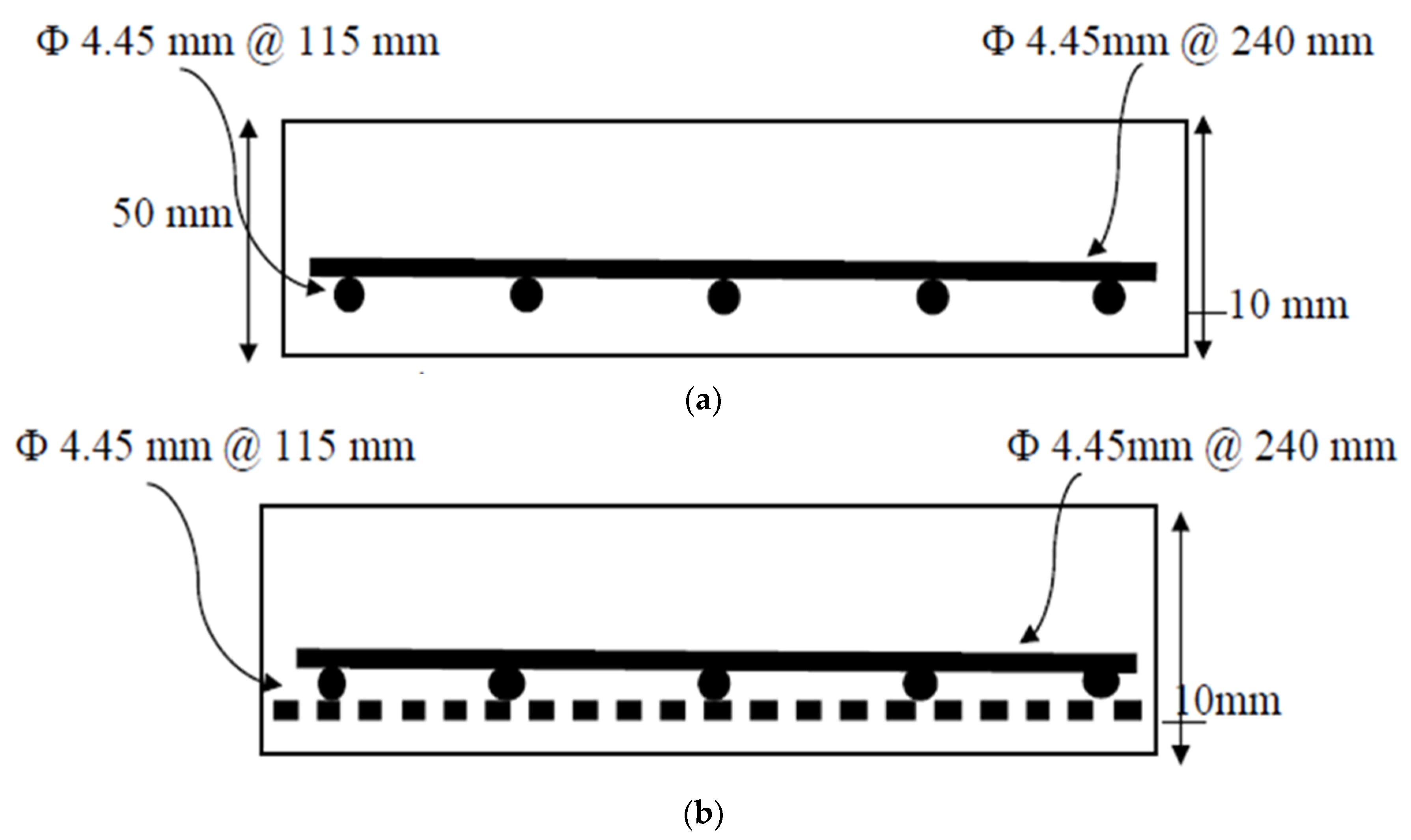


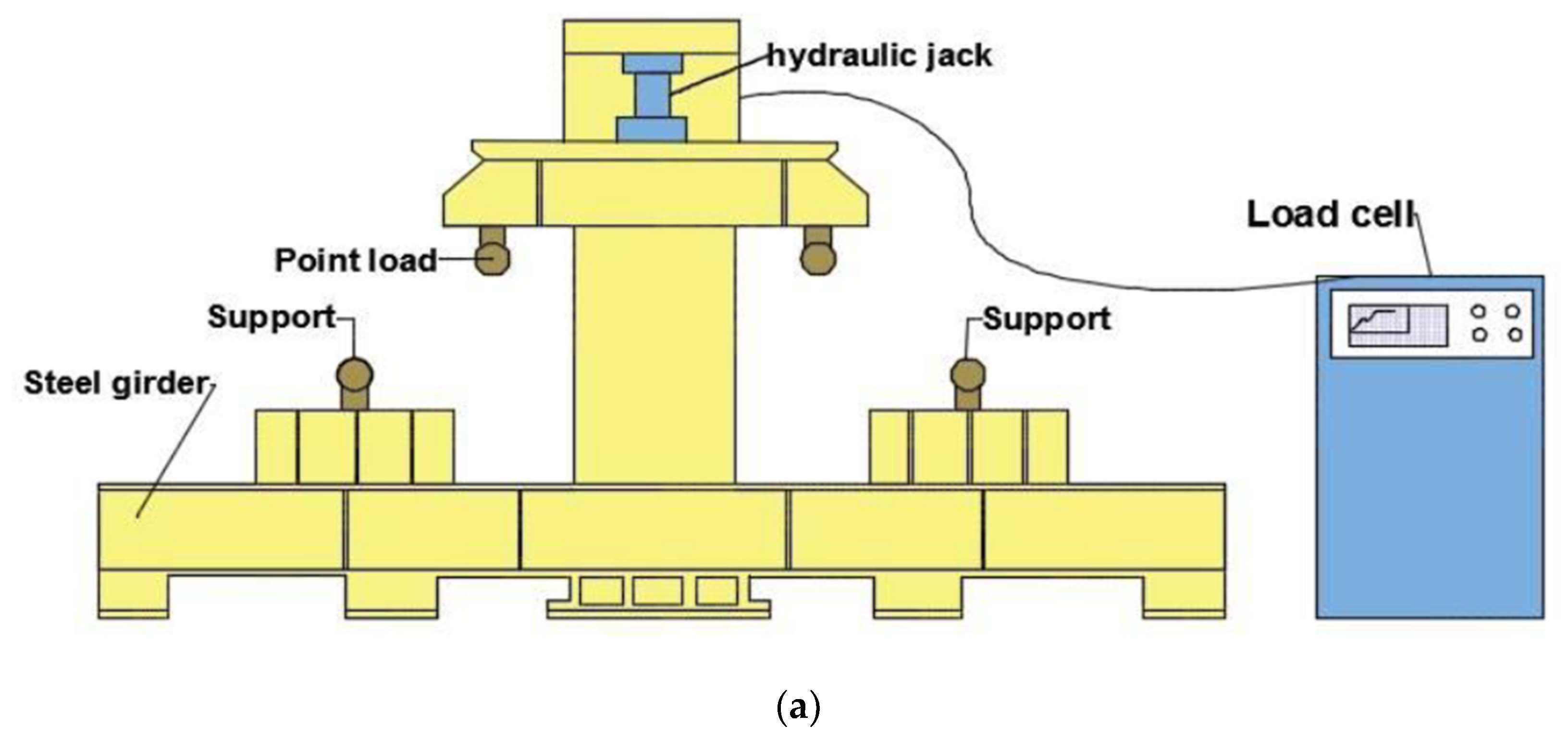

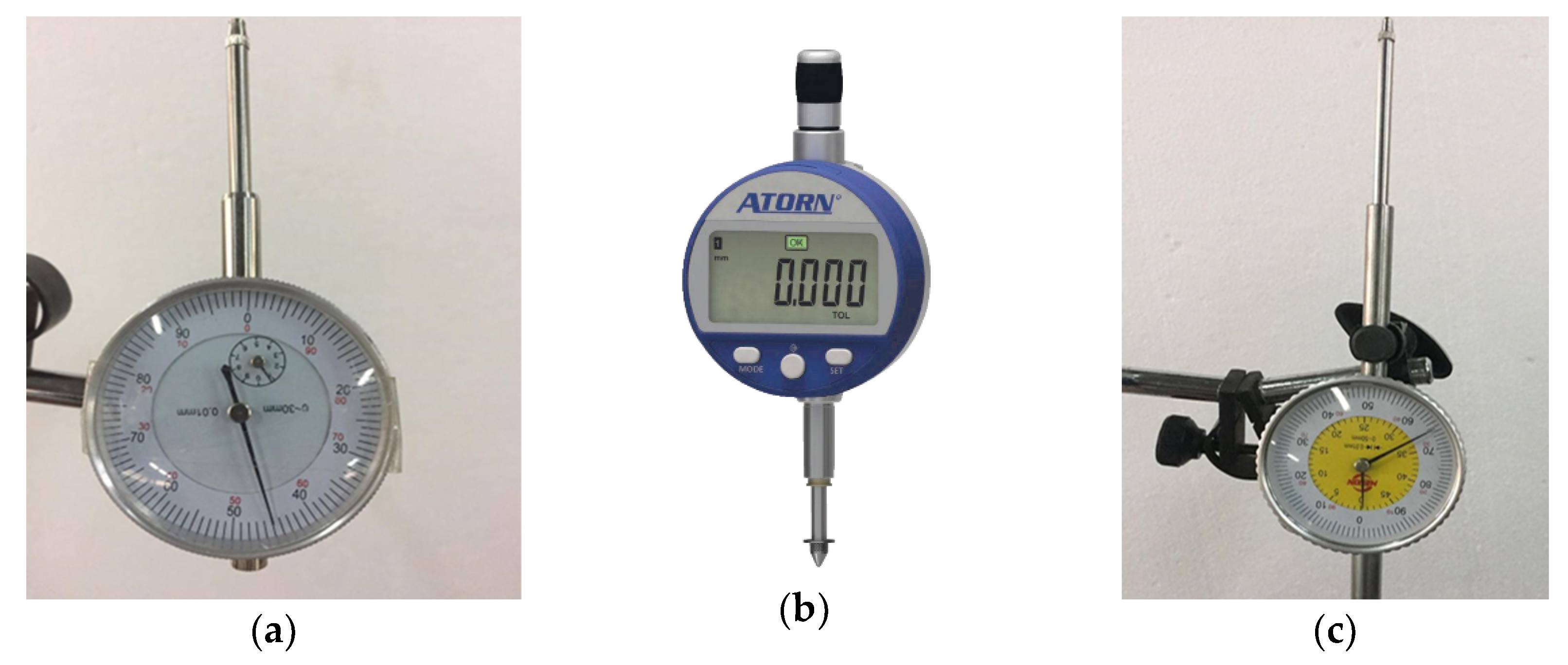



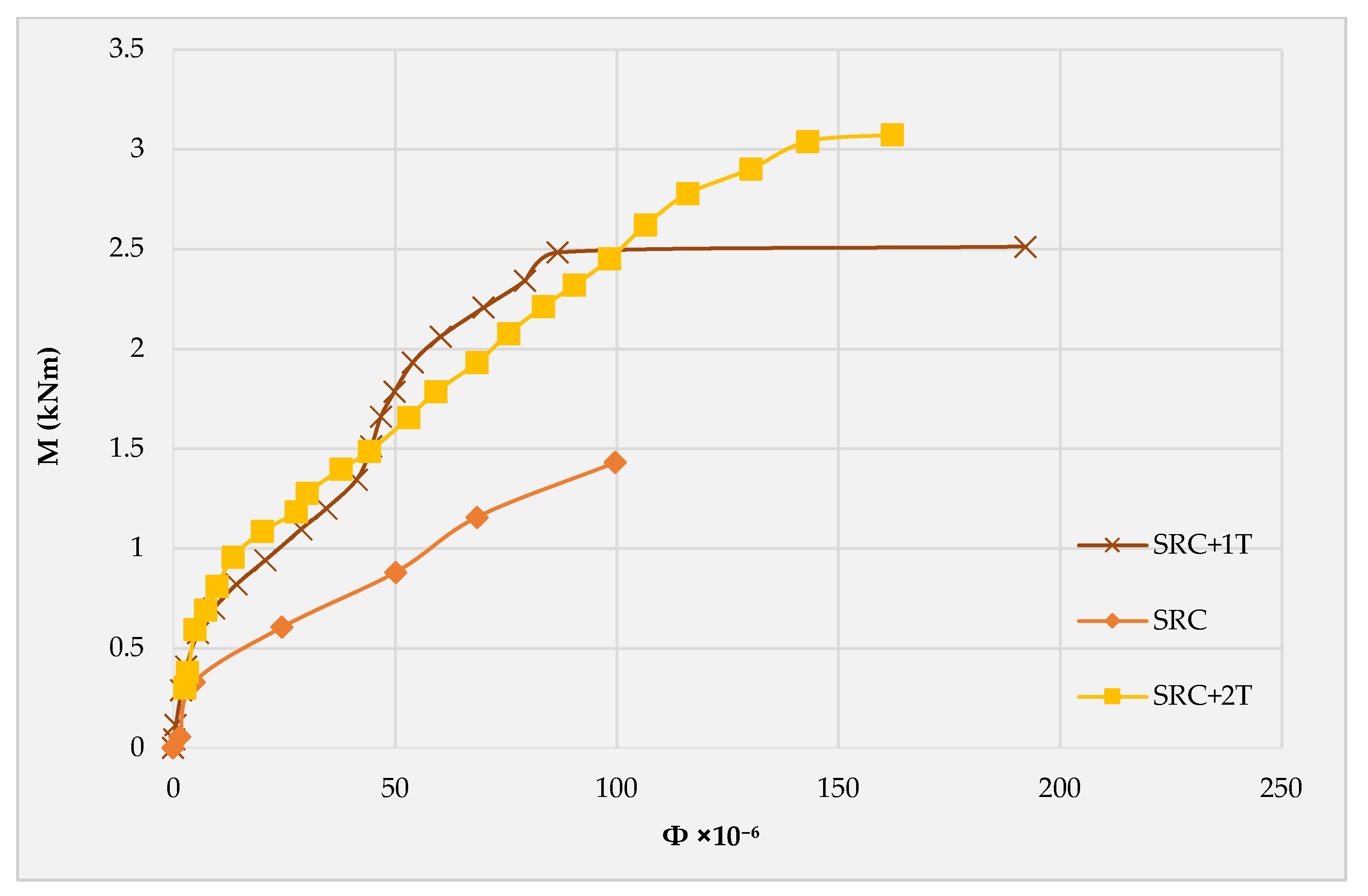
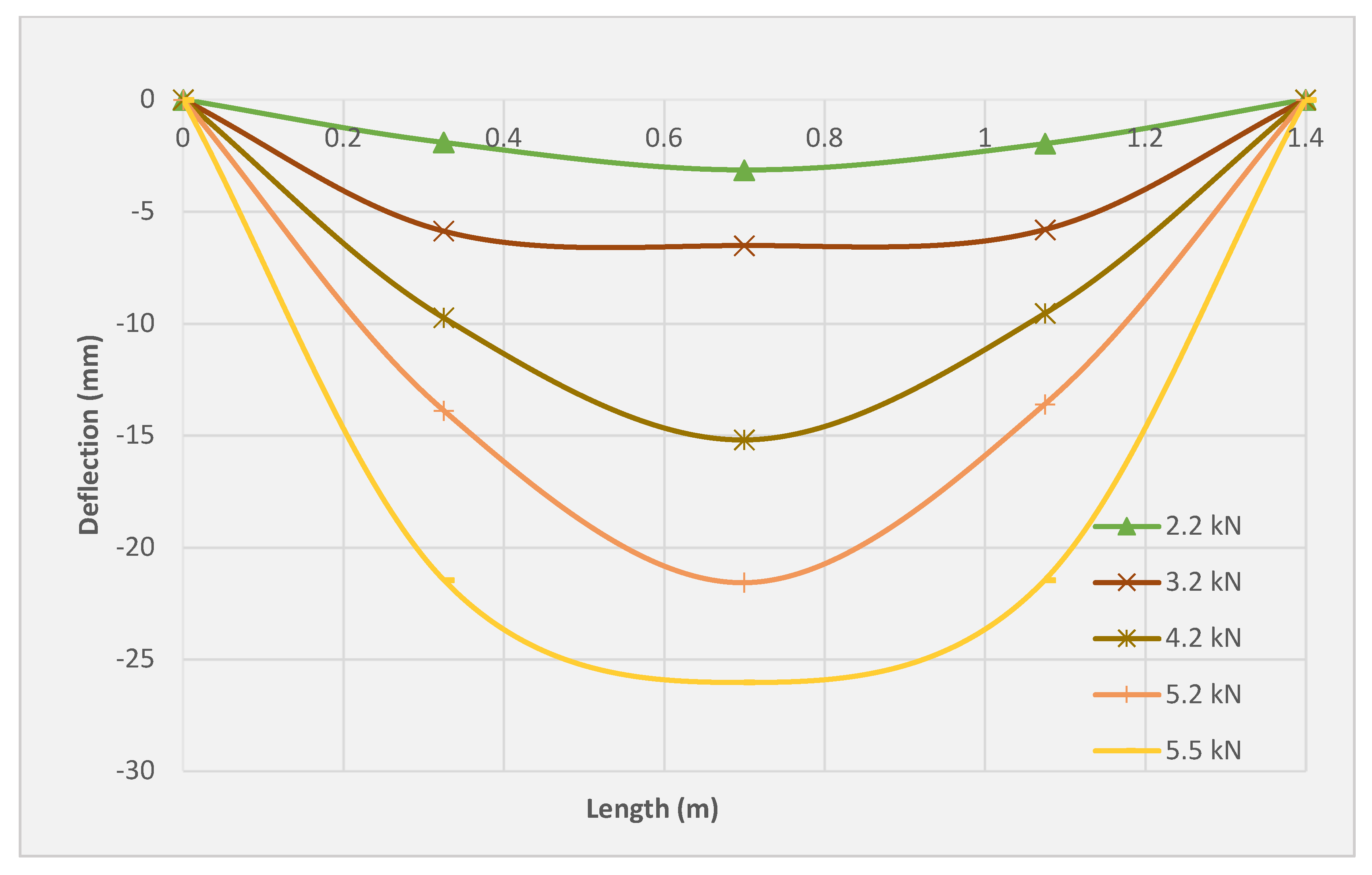
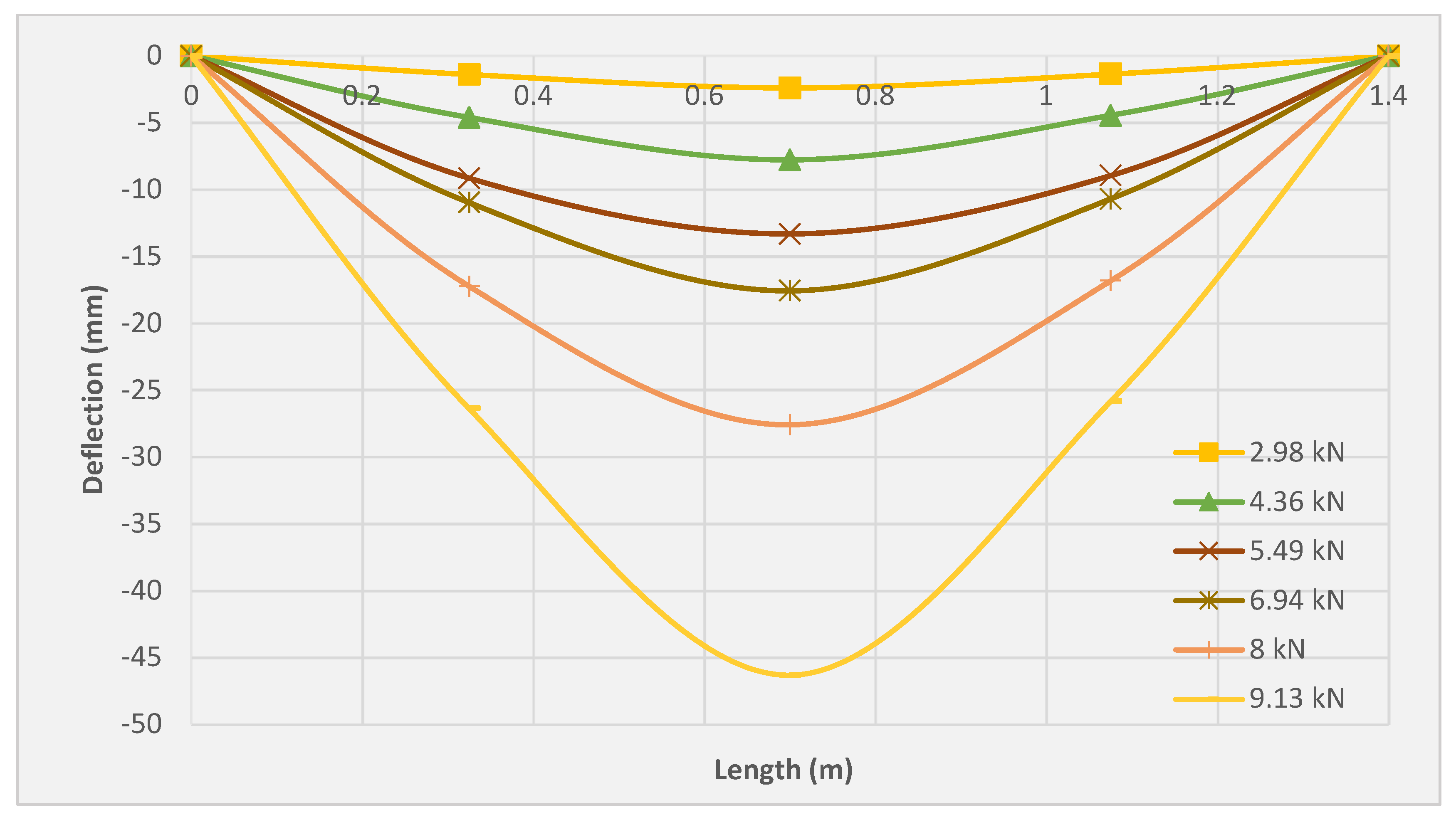
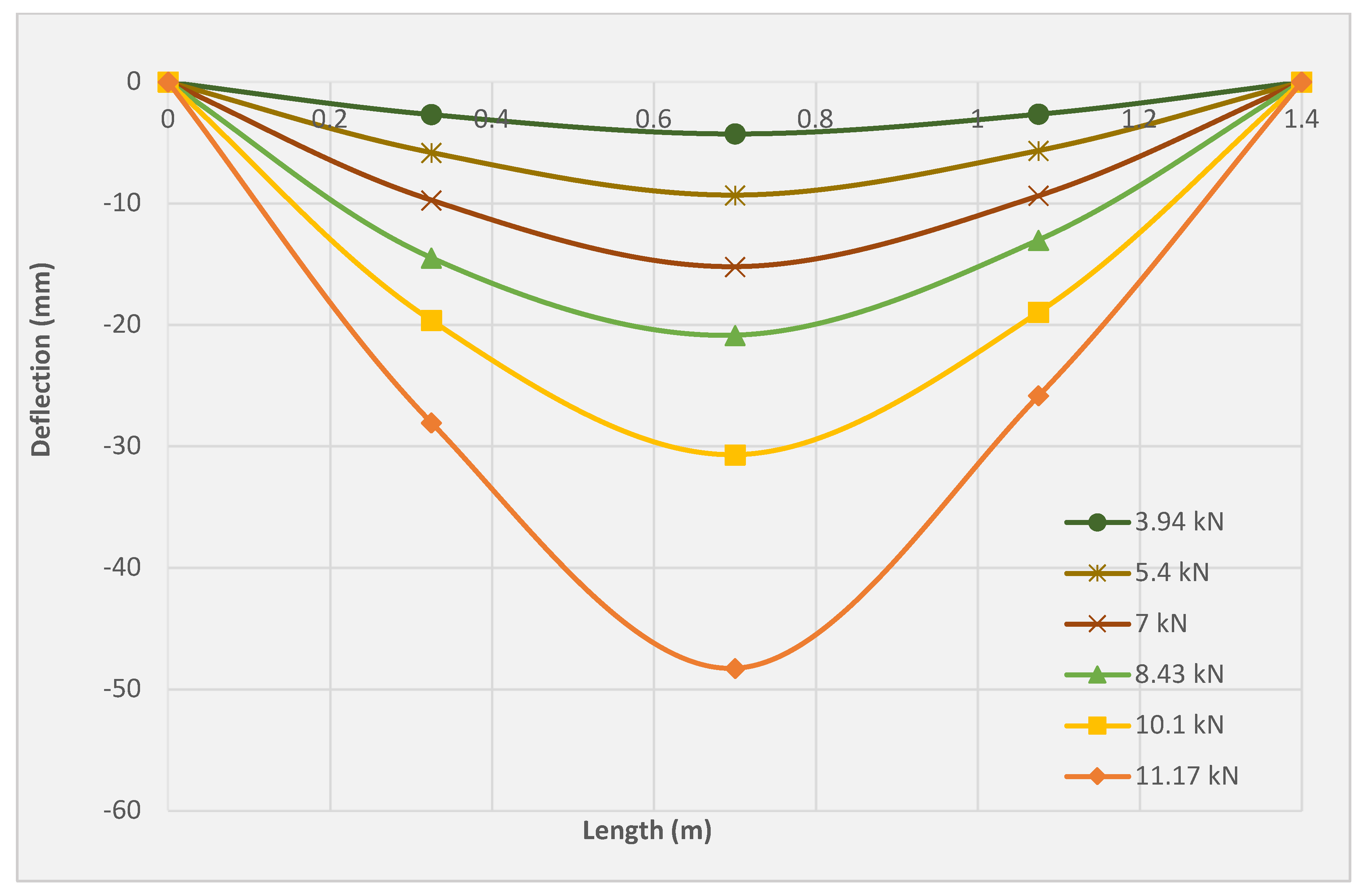



| Cement (kg/m3) | 650 |
| Silica fume (kg/m3) | 65 |
| Sand (0–0.6) mm (kg/m3) | 1215 |
| Superplasticizer (kg/m3) | 15.37 |
| Water (kg/m3) | 250 |
| Cylinder compressive strength (28) day (MPa) | 47.2 |
| Flow ability, diameter in (mm) | 250 |
| Bar Diameter (mm) | Measured Diameter (mm) | Yield Stress (MPa) | Strain at Yield Stress (Micro Strain) | Ultimate Stress (MPa) | Modulus of Elasticity (MPa) |
|---|---|---|---|---|---|
| 4 | 4.45 | 390 | 2000 | 464.7 | 195,000 |
| Material | PAN Textile |
|---|---|
| Weight (kg/m2) | 0.16 ± 0.010 |
| Width (mm) | 1000 |
| Thickness (mm) | 0.2 |
| Mesh size (mm) | 25 × 330 |
| Tensile strength (MPa) | 3530 |
| Tensile Modulus (MPa) | 230,000 |
| Color | Black |
| Slab Symbol | As. mm2 | AT mm2 | Steel σt MPa | Textile σt MPa | Location of the Reinforcements (From the Bottom) |
|---|---|---|---|---|---|
| SRC | 77.75 | – | 390 | – | Steel: 10 mm |
| SRC + 1T | 9 | 3530 | Steel: 10 mm Textile layer 1T: 9.9 mm | ||
| SRC + 2T | 18 | Steel: 10 mm Textile layer 1T: 9.9 mm Textile layer 2T: 14.1 mm |
| Type of Concrete Mix | Compressive Strength (MPa) | Tensile Strength (MPa) | Flexural Strength (MPa) | Modulus of Elasticity (GPa) |
|---|---|---|---|---|
| Concrete (TRC) | 45–51 | 4.1–44.44 | 6.05–6.3 | 31.528 |
| Gauge Type | Resistance in Ω | Grid Size (mm) | Gauge Dimensions | |
|---|---|---|---|---|
| Length (mm) | Width (mm) | |||
| BF350-1AA | 120 | 1 × 3.75 | 4.7 | 4.6 |
| BF120-20AA | 120 | 20 × 3.5 | 25 | 5 |
| Slab Symbol | Cracking Load (kN) | Yield Load (kN) | Ultimate Load (kN) | Mid-Span Deflection at Yield (mm) | Mid-Span Deflection at Ultimate Load (mm) |
|---|---|---|---|---|---|
| SRC | 1.2 | 4.2 | 5.5 | 15.2 | 26.04 |
| SRC + 1T | 2.09 | 9.03 | 9.13 | 33.46 | 46.3 |
| SRC + 2T | 3.48 | 8.045 | 11.17 | 19.17 | 48.28 |
| Slab Symbol | Method (1) | Method (2) | Method (3) | Method (4) | |
|---|---|---|---|---|---|
| SRC | 1.71 | 1.46 | 1.71 | 2.05 | – |
| SRC + 1T | 1.17 | 2.22 | 3.37 | 2.11 | 5.78 |
| SRC + 2T | 2.51 | 1.94 | 3.06 | 2.18 | 5.04 |
Publisher’s Note: MDPI stays neutral with regard to jurisdictional claims in published maps and institutional affiliations. |
© 2022 by the authors. Licensee MDPI, Basel, Switzerland. This article is an open access article distributed under the terms and conditions of the Creative Commons Attribution (CC BY) license (https://creativecommons.org/licenses/by/4.0/).
Share and Cite
Hussein, O.H.; Ibrahim, A.M.; Abd, S.M.; Najm, H.M.; Shamim, S.; Sabri, M.M.S. Hybrid Effect of Steel Bars and PAN Textile Reinforcement on Ductility of One-Way Slab Subjected to Bending. Molecules 2022, 27, 5208. https://doi.org/10.3390/molecules27165208
Hussein OH, Ibrahim AM, Abd SM, Najm HM, Shamim S, Sabri MMS. Hybrid Effect of Steel Bars and PAN Textile Reinforcement on Ductility of One-Way Slab Subjected to Bending. Molecules. 2022; 27(16):5208. https://doi.org/10.3390/molecules27165208
Chicago/Turabian StyleHussein, Omar H., Amer M. Ibrahim, Suhad M. Abd, Hadee Mohammed Najm, Saba Shamim, and Mohanad Muayad Sabri Sabri. 2022. "Hybrid Effect of Steel Bars and PAN Textile Reinforcement on Ductility of One-Way Slab Subjected to Bending" Molecules 27, no. 16: 5208. https://doi.org/10.3390/molecules27165208
APA StyleHussein, O. H., Ibrahim, A. M., Abd, S. M., Najm, H. M., Shamim, S., & Sabri, M. M. S. (2022). Hybrid Effect of Steel Bars and PAN Textile Reinforcement on Ductility of One-Way Slab Subjected to Bending. Molecules, 27(16), 5208. https://doi.org/10.3390/molecules27165208







